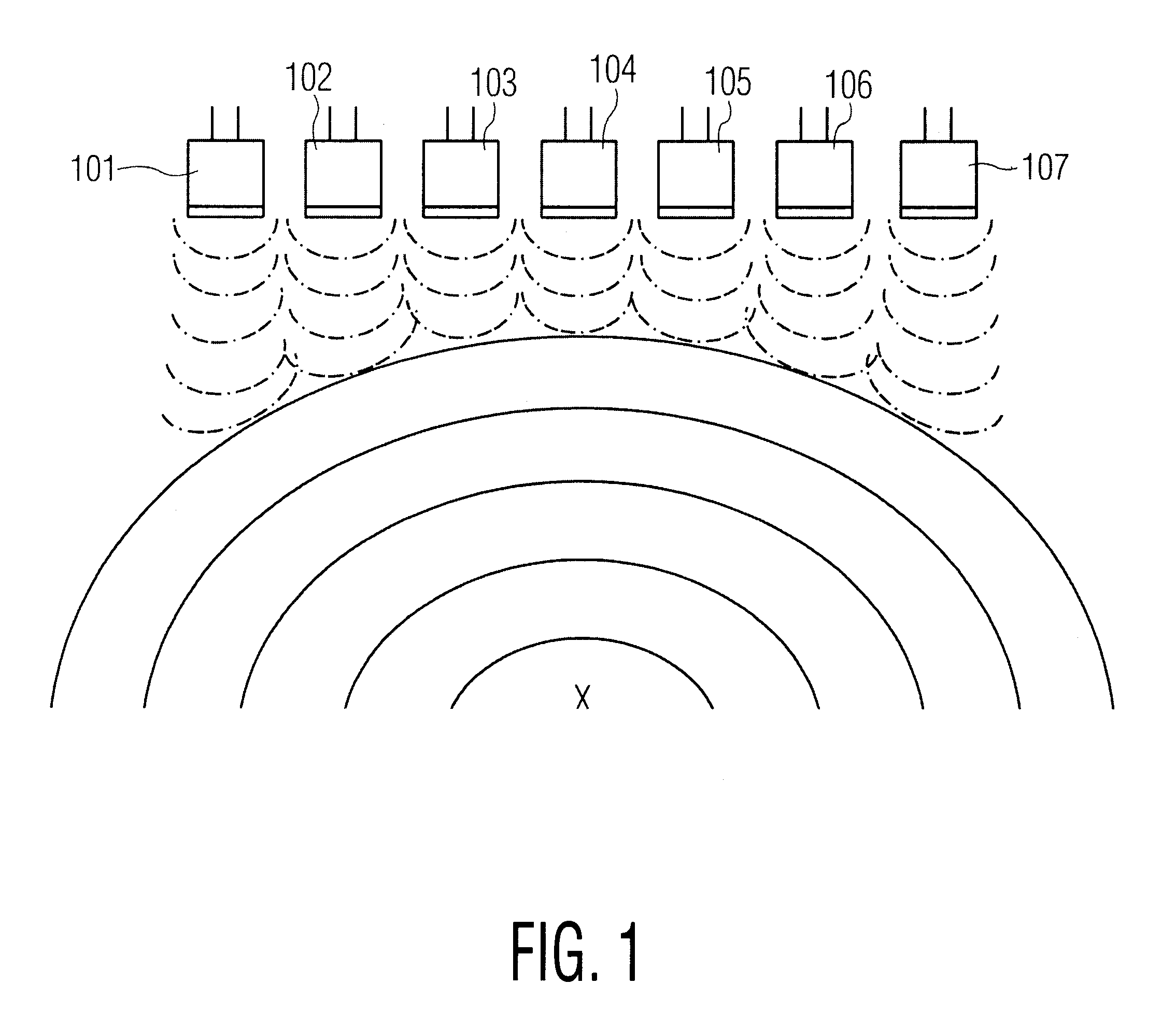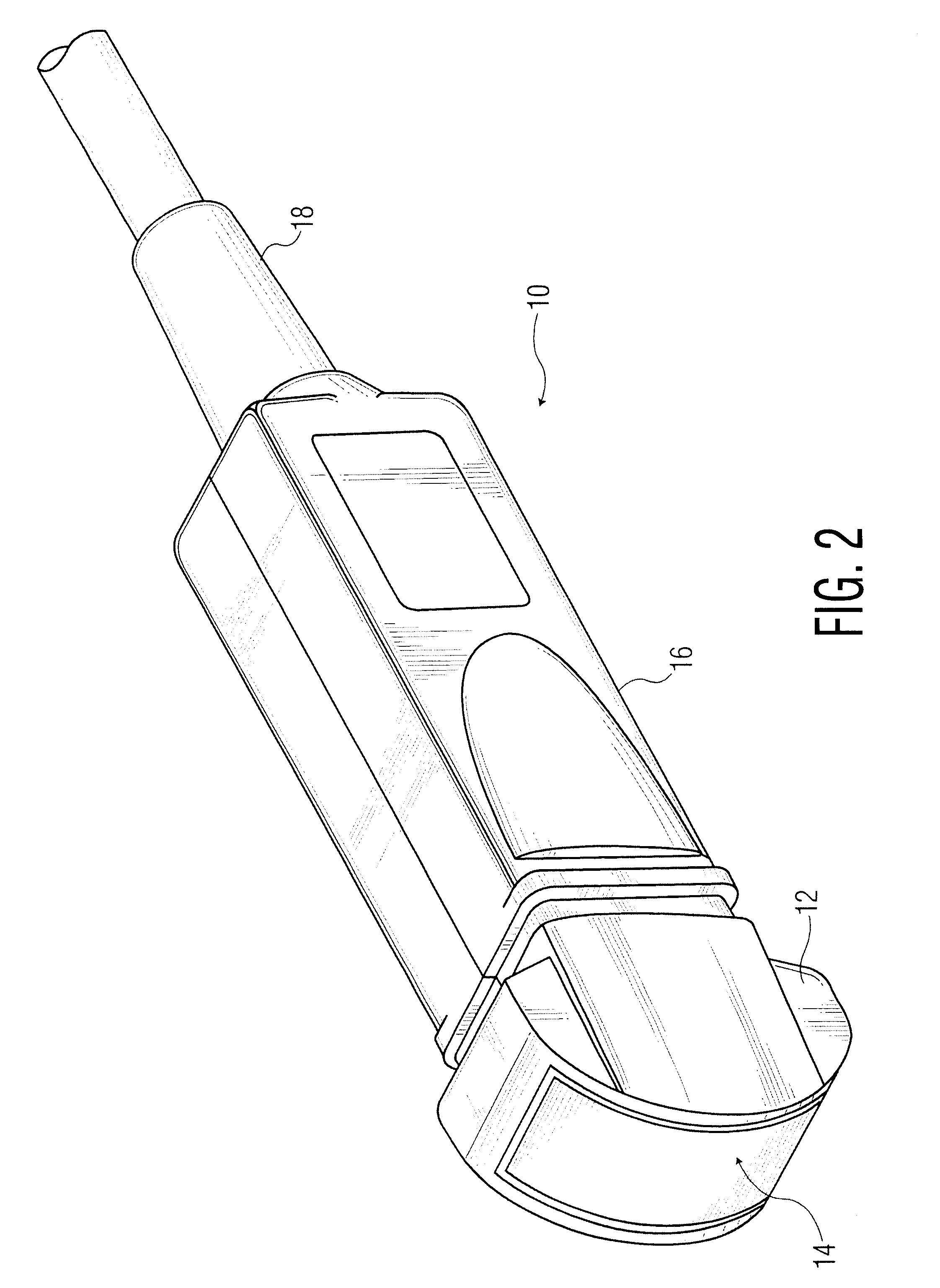Imaging ultrasound transducer temperature control system and method
a technology of ultrasound transducer and temperature control system, which is applied in the field of imaging ultrasonic medical transducer assemblies, can solve the problems of less penetration ability of high frequency ultrasonic waves, less well defined received images, and greater penetration depth of frequency ultrasonic waves
- Summary
- Abstract
- Description
- Claims
- Application Information
AI Technical Summary
Problems solved by technology
Method used
Image
Examples
Embodiment Construction
The present invention is directed to a novel system and method of controlling the radiant heat from the patient contact surface of an ultrasonic transducer. Although the details of implementation may be different in different embodiments, the present invention is not limited to any particular type of ultrasonic transducer, whether used internally or externally, or any particular mode of imaging and / or data analysis. The presently preferred embodiments of the present invention control the temperature of the transducer face by alternating the imaging modes of the system based on feedback from temperature sensing elements placed in the transducer. In one preferred embodiment, the system switches from a higher power imaging mode to a lower power imaging mode when a threshold temperature is reached. In another preferred embodiment, the system switches to a "mixed" imaging mode, where the system cycles between a higher power imaging mode and a lower power imaging mode.
A block diagram of t...
PUM
 Login to View More
Login to View More Abstract
Description
Claims
Application Information
 Login to View More
Login to View More - R&D
- Intellectual Property
- Life Sciences
- Materials
- Tech Scout
- Unparalleled Data Quality
- Higher Quality Content
- 60% Fewer Hallucinations
Browse by: Latest US Patents, China's latest patents, Technical Efficacy Thesaurus, Application Domain, Technology Topic, Popular Technical Reports.
© 2025 PatSnap. All rights reserved.Legal|Privacy policy|Modern Slavery Act Transparency Statement|Sitemap|About US| Contact US: help@patsnap.com



